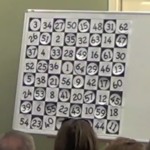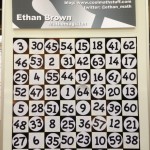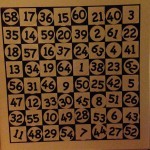(Submitted by Skepticality personality and friend of the blog Bob Blaskiewicz.)
Competitor dies in the middle of a match during Chess Olympiad in Norway and another is found dead in hotel room
The most prestigious international tournament in chess, at which the world’s top players compete alongside amateurs to win honours for their country, has ended on a sombre note after two players died suddenly within hours of each other, one while he was in the middle of a match. Hundreds of spectators attending the 41st Chess Olympiad in Tromsø, Norway, and countless others watching live TV coverage on Norway’s state broadcaster, reacted with shock after Kurt Meier, 67, a Swiss-born member of the Seychelles team, collapsed on Thursday afternoon, during his final match of the marathon two-week contest. Despite immediate medical attention at the scene he died later in hospital.Hours later, a player from Uzbekistan who has not yet been named was found dead in his hotel room in central Tromsø. Norwegian police and the event’s organisers said on Friday they were not treating the deaths as suspicious.
“We regard these as tragic but natural deaths,” said Jarle Heitmann, a spokesman for the Chess Olympiad. “When so many people are gathered for such a long time, these things can happen.
“The Olympiad involved 1,800 competitors from 174 countries, accompanied by more than 1,000 coaches, delegates and fans.
The event sees players compete in national teams over 11 rounds, often playing matches that last for up to six hours, and claims a worldwide online audience of tens of millions.
There were brief scenes of panic in the hall after Meier’s collapse, when spectators reportedly mistook a defibrillator for a weapon. Play was briefly suspended before his death was marked with a minute’s silence during the closing ceremony.
While the causes of the two men’s deaths are still unknown, they will raise questions about the mental and physical stress that tournaments place on players.
Meier is not the first player to die in the middle of a match; in 2000 Vladimir Bagirov, a Latvian grandmaster, had a fatal heart attack during a tournament in Finland, while in the same year, another Latvian, Aivars Gipslis, suffered a stroke while playing in Berlin from which he later died.
One of Australia’s leading players, Ian Rogers, retired abruptly from chess in 2007, saying he had been warned by his doctors that the stress of top-level competition was causing him serious health problems.
Tarjei J. Svensen, a reporter for chess24.com who attended the Olympiad, said the event had a reputation for heavy drinking. “There are two rest days during the competition, and particularly the night before the rest days there tends to be a lot of drinking,” he said.
A favourite attraction for delegates was the now-legendary “Bermuda party”, he added, hosted at each Olympiad by a member of the Bermudan delegation.
The Olympiad was big news in Norway, with the state broadcaster, NRK, carrying hours of live coverage each day, and the country’s government paying 87m kroner (£8.5m) for the privilege of hosting the event.
Last week the women’s team from Burundi were disqualified after failing to show up for their round six and seven matches; they remain unaccounted for, Heitmann said on Friday.
“It has been an eventful Olympiad, certainly,” said Svensen.
_______________________________________________________________________________________________________
Below are the extended notes provided by contributing editor Mark Gouch for use in Skepticality Episode 251. Mark is a wastewater treatment system operator and engineer living in Smithtown, NY (Long Island). He started to become interested in coincidences after recognizing the series of events that conspired to get him employment on Long Island many years ago. Two of Mark’s recommended books include “The Drunkard’s Walk: How Randomness Rules Our Lives” by American physicist and author Leonard Mlodinow, and “The Hidden Brain: How Our Unconscious Minds Elect Presidents, Control Markets, Wage Wars, and Save Our Lives” by Shankar Vedantam.
Take a look and leave your comments below. Also, please be sure to listen to the podcast for our own hilarious commentary.
A sad story, and surely it must have been a shock to those involved in the chess tournament. Well, we do not have a lot of information about the cause of death of the two men, so that limits what we might say about the probability. The best we can do is a very general estimate of the odds of the death of any person out of a thousand random persons. According to the ECOLOGY Global Network ™ web site, as of 2011 the global daily death rate was about 151,600 deaths per day. And in round numbers world population is about 7.3 billion.
So it would seem we should estimate the odds of one person out of a thousand at any conference, or any group of a thousand people should be somewhere around 151,600/7,30,000,000 * 1000= 0.0215, or about 2.15%. The odds of two persons in the group dying would be 0.0215 * 0.0215=0.00046, or about 0.046%. I think most people like to think of odds in terms of per million. So 0.0046% odds is 46,200 per million. This means that for every million conferences, meetings, etc. that have about a thousand persons in attendance, there would be over 46,000 of those events.




